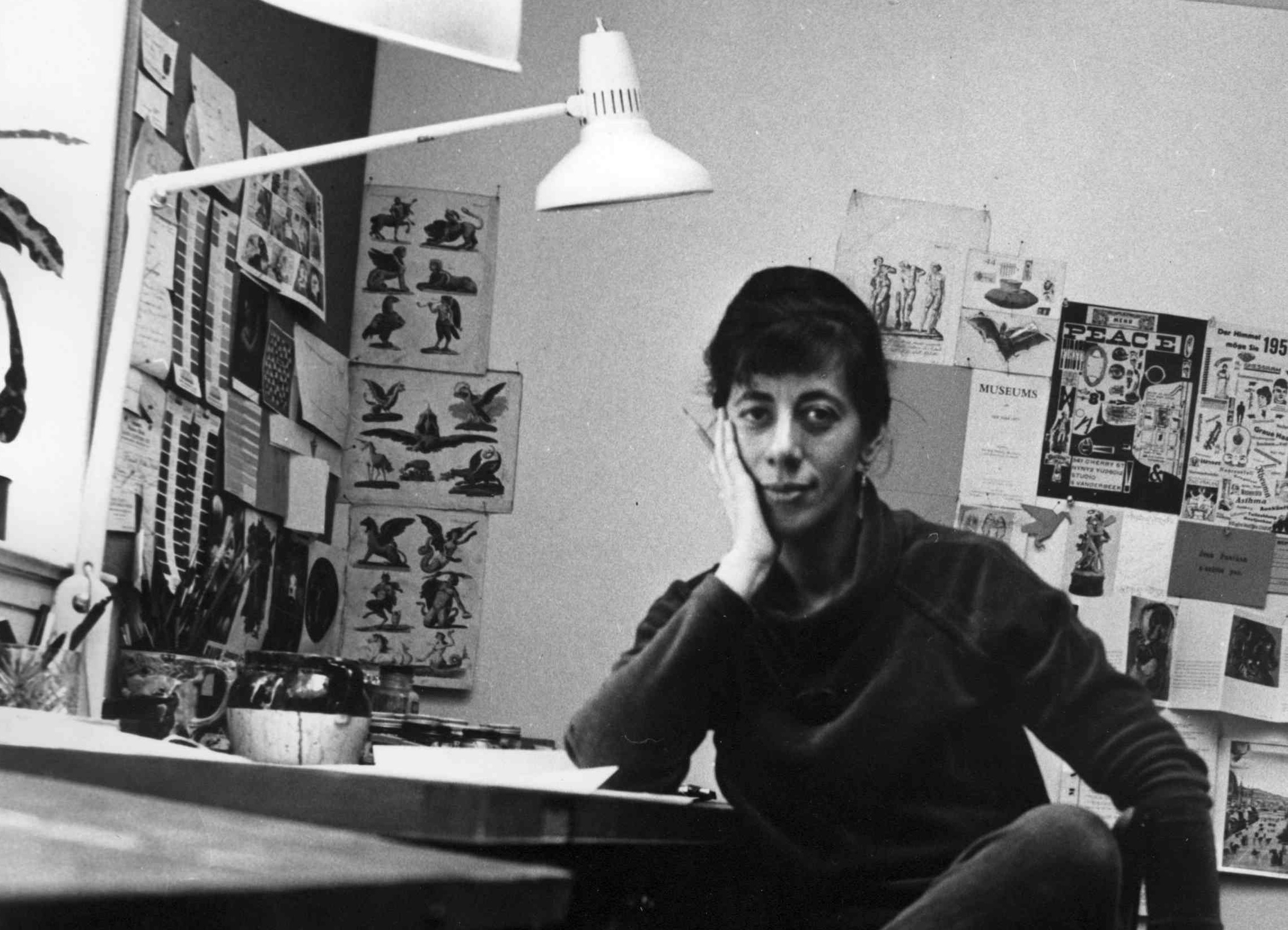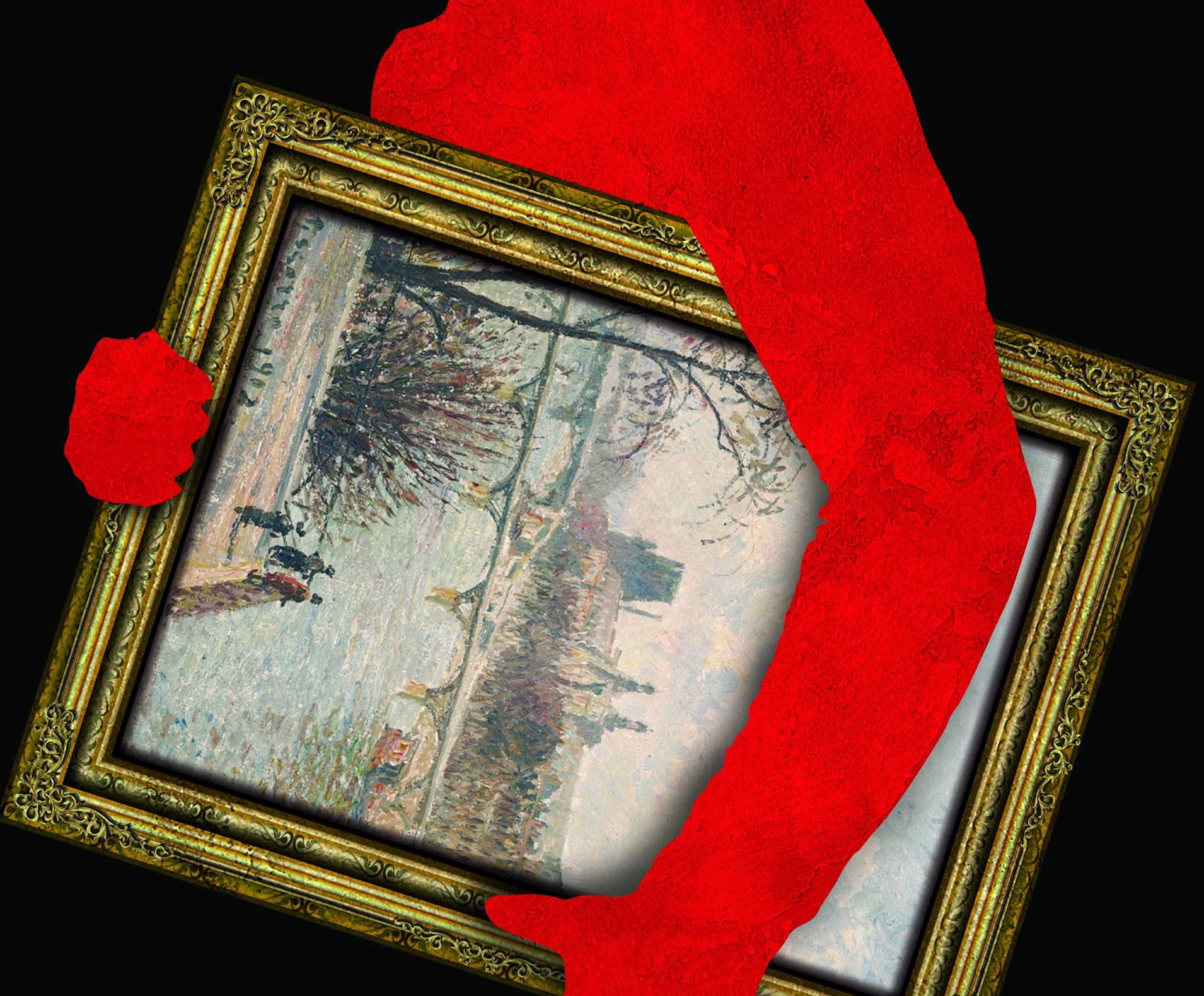WWII
-
-

The Three Exiles of the German-born artist Samson Schames (1898-1967)
ONLINE VA, United States
Conversation with Annika Friedman (Germany), Rachel Dickson, PhD (UK) and Ori Z Soltes, PhD (USA)In this virtual event, a transatlantic panel discusses the artist Samson Schames. Annika Friedman (Germany) elaborates on the artist’s beginnings in Frankfurt, Rachel Dickson, PhD (UK) gives an insight into the work he made in British exile, and Ori Z. Soltes, PhD (USA) speaks about the work he created in his new home, New York. The presentations are followed by a moderated discussion and Q&A. Image above: Samson Schames, Granite Quarry No. 1, 1958. Casein on board, 20.75 in. x 26.25 in. Leo Baeck Institute New York 2007.97 Samson Schames was a German-Jewish artist born in 1898 in Frankfurt am Main, Germany, into a prominent Jewish family involved in the textile business. He initially trained [...]
Free -
-

Theodore Fried (1902-1980): In Hiding and Beyond
ONLINE VA, United States
Presentation by Sofia Thornblad, Tulsa (OK)This presentation explores the historical background and creative works of Hungarian-born Jewish artist Theodore Fried (1902-1980). He was educated at the Budapest Academy of Fine Arts and moved to Vienna in 1924 and to Paris in 1925. He met and married his first wife Anna and his son Christopher was born in 1928. That same year, the artist had his first one-man show, and was included in important shows in Vienna, Prague, Berlin, and Paris. Image above: Detail of Theodore Fried, Self Portrait, 1938. Oil on canvas. Sherwin Miller Museum of Jewish Art, Tulsa (OK) When the Nazis came to power in 1933, Fried’s work was labeled as “degenerate”. He fled with [...]
Free -

Samson Schames (1898-1967): Family and Friends
ONLINE VA, United States
Conversation with Natalie Green Giles, James McCaffrey and Charlie Scheidt.
Moderated by William WeitzerIn this virtual event, a distinguished panel comprising family members, friends, and their descendants from New York share memories of the German-born artist Samson Schames (1898-1967). His work, which blends modernist aesthetics with spiritual and historical depth, is recognized for its innovative technique and poignant reflections on exile, memory, and identity. Born in Frankfurt am Main, Germany, he fled Nazi persecution to England in 1939 and later emigrated to the United States with his future wife, Edith, in 1948 and 1947. Image above: Samson Schames, Blowing the Shofar, c. 1956. Shards of glass, polychrome, layered in relief, 25.4 x 29.7 in. (64.5 x 75.5 cm). Jewish Museum Frankfurt A short film created [...]
Free -

Ossip Klarwein (1893-1970): an Architect’s Journey from Berlin to Jerusalem
ONLINE VA, United States
Presentation by Jacqueline Hénard, Berlin (Germany)In this virtual event, Jacqueline Hénard speaks about the architect Ossip (also: Joseph) Klarwein (1893-1970), a pioneer of the avant-garde, whose works – including iconic buildings such as the church at Hohenzollernplatz in Berlin and the Knesset in Jerusalem – built bridges between expressionist tradition and radical modernism. Image above: Ossip Klarwein, Knesset in Jerusalem (Israeli parliament). Photo front side, 2022. Wikimedia Commons Clema12, CC BY-SA 4.0 Ossip Klarwein was born in 1893 in Warsaw. Due to pogroms in the collapsing Russian Empire, he emigrated with his parents and siblings to Hesse in 1905. Klarwein became an architect, with professional focuses in Berlin and Hamburg. In 1924, he married Martha Elsa Kumme, a Protestant opera singer. They had a son, Matthias. [...]
Free -
-

Matisse at War. Art and Resistance in Nazi Occupied France
ONLINE VA, United States
Book talk by Christopher C. GorhamIn this book talk, author Christopher C. Gorham speaks about the artist Henri Matisse (1869-1954) and his steadfastness to live and work during the years of World War II and the Nazi occupation of France. When the Degenerate Art exbibit opened in Munich in the summer of 1937, works by notable foreign modernists were denigrated along with German artists. Henri Matisse’s Blue Window (1913) was legally seized by the Nazi regime for inclusion in the traveling exhibit, and his work was banned from German museums. Henri Matisse was among the modernists derided by the Nazis. That did not stop them from stealing his art. At the Jeu de Paume Museum, Paris, [...]
Free -
-

Confronting the Holocaust in Midcentury American Art
ONLINE VA, United States
Presentation by Jennifer McComas, Bloomington (Indiana)The Holocaust’s profound impact on midcentury American art has been underrecognized and understudied. Jennifer McComas, curator of the current exhibition Remembrance and Renewal: American Artists and the Holocaust, 1940-1970 at Indiana University’s Eskenazi Museum of Art and primary author of the accompanying catalogue, explores the ways that American artists—American-born, immigrants, refugees from Nazi-occupied Europe, and Holocaust survivors—confronted the Holocaust in their work during the war and in the decades just after. Image above: Anna Walinska (American, born England, 1906-1997), Survivors – Exodus, 1958. Oil on canvas, 60 x 84 in. (152.4 x 213.4 cm). Gift of Rosina Rubin, Eskenazi Museum of Art, Indiana University, 2023.29. © Atelier Anna Walinska. Photo: Shanti Knight. [...]
Free -

From Vienna to Movies:
ONLINE VA, United States
Costume Designer Ruth Morley at 100, a birthday commemoration.
Presentation by Melissa Hacker and Susan GammieIn this virtual event, the life and work of Costume Designer Ruth Morley will be discussed by her daughter Melissa Hacker and Susan Gammie, her assistant, protégé and close friend. Ruth Morley (1925-1991) fled her childhood home in Vienna on a Kindertransport as an unaccompanied child refugee, arrived in New York City as a teenager, and became a noted costume designer whose career spanned decades and disciplines, including dance, opera, theater, film and television. Her film credits include American classics Tootsie, Annie Hall, Taxi Driver, The Chosen, Kramer vs Kramer and The Hustler; her theater, opera and dance credits include Death of Salesman (with Dustin Hoffman), The Threepenny Opera, Deathtrap, Miracle Worker (stage and film, for the film, she received an Oscar nomination), Billy Budd, the Golem, and many more. Television includes Playing for Time with Vanessa Redgrave and Mussolini with George C [...]
Free -
-

Resistance and Art:
School of Visual Arts 133 West 21st Street, New York, United States
The “Red Orchestra” Anti-Nazi Group in Berlin
Presentation by Stefan Roloff, Berlin (Germany)
School of Visual Arts, 133/141 West 21st Street, Room 101C, New York, NYBFA Visual and Critical Studies, the SVA Honors Program and the Fritz Ascher Society for Persecuted, Ostracized and Banned Art host a lecture by painter and filmmaker Stefan Roloff, exploring the visual art and resistance of three members of the "Red Orchestra" underground anti-Nazi group. Image above: Katja Meirowsky, Photo of cabaret performance at the jazz club “Die Badewanne” [“The Bathtub”] in Berlin-Wilmersdorf, 1949/50. The so-called “Red Orchestra” fought against the Third Reich within Germany from 1933 to 1942. The Gestapo labeled them as Communists and traitors, a theory that was upheld by Allied Secret Services until recently. Historians now officially recognize their work as that of the largest and most diverse civil anti-Nazi resistance [...]
Free -

Flight or Fight? Artists in Nazi Germany, 1933-1945
Kupferberg Holocaust Center 222-05 56th Avenue, Queens, NY, United States
Presentation by Rachel Stern, New York
Kupferberg Holocaust Center @ Queensborough Community College, Queens, NYBetween 1933 and 1945, the National Socialist regime controlled artistic work in Germany. Join Rachel Stern, founding director of the Fritz Ascher Society for Persecuted, Ostracized and Banned Art, for a discussion about the system of fear and control installed by the Nazis, its impact on the national cultural landscape, and artists’ strategies of survival. This event is part of the 2025-26 KHC and National Endowment for the Humanities Colloquium, “Resistance, Resilience and Reinvention: Artists and Academics Escaping Nazism.” It is co-sponsored by the Holocaust & Human Rights Education Center in White Plains; the Center for Genocide and Human Rights Research in Africa and the Diaspora at Northeastern Illinois University; the Center for the Study of Genocide and Human [...]
Free -

Looted! The Nazi Art Plunder of Jewish Families in France
ONLINE VA, United States
Book talk by Peter Elliott (France)In this book talk Peter Elliott speaks about the lives and art collections of four French Jewish families, whose art was looted and whose businesses were confiscated during the Nazi Occupation of France (1940-44). He speaks about their businesses and art collections, and the journeys of their paintings during wartime and beyond. The four protagonist families all made an important cultural and economic contribution to France. Image above: Detail of book cover The four protagonist families all made an important cultural and economic contribution to France. The Bader/Heilbronn/Meyer family were founders of the French department store, Galeries Lafayette. Their entire art collections were looted by the German ERR (Reichsleiter Rosenberg [...]
Free


